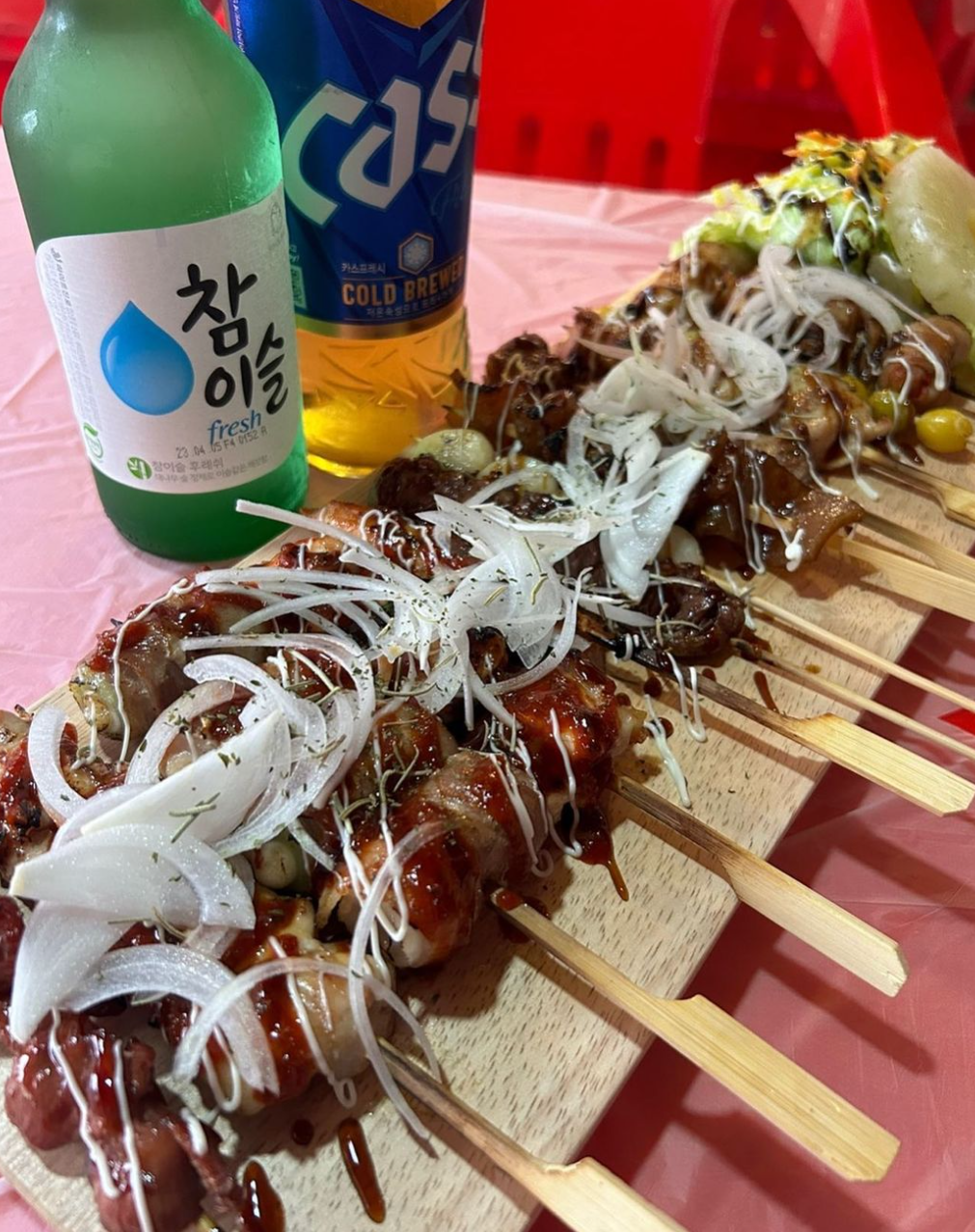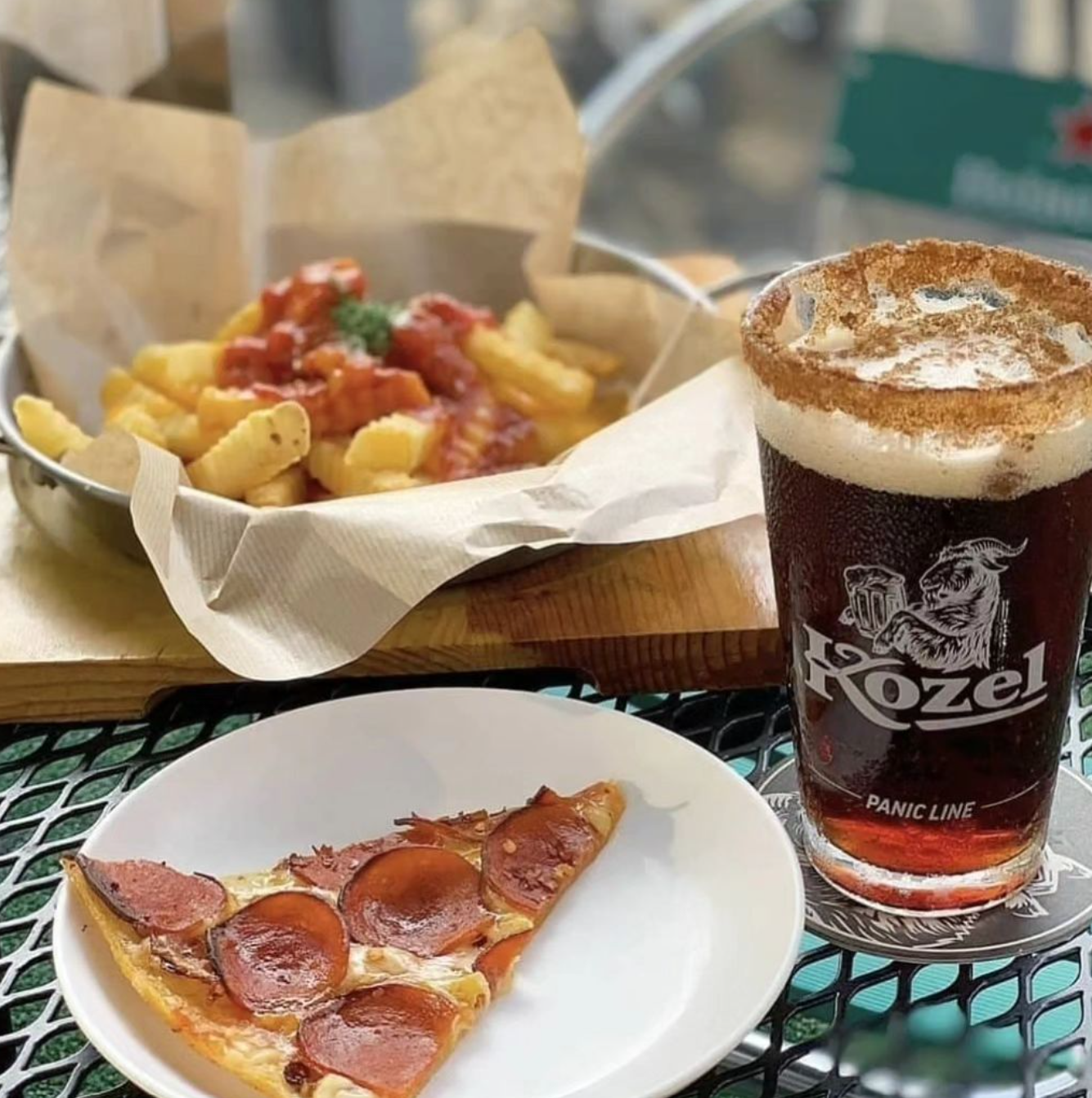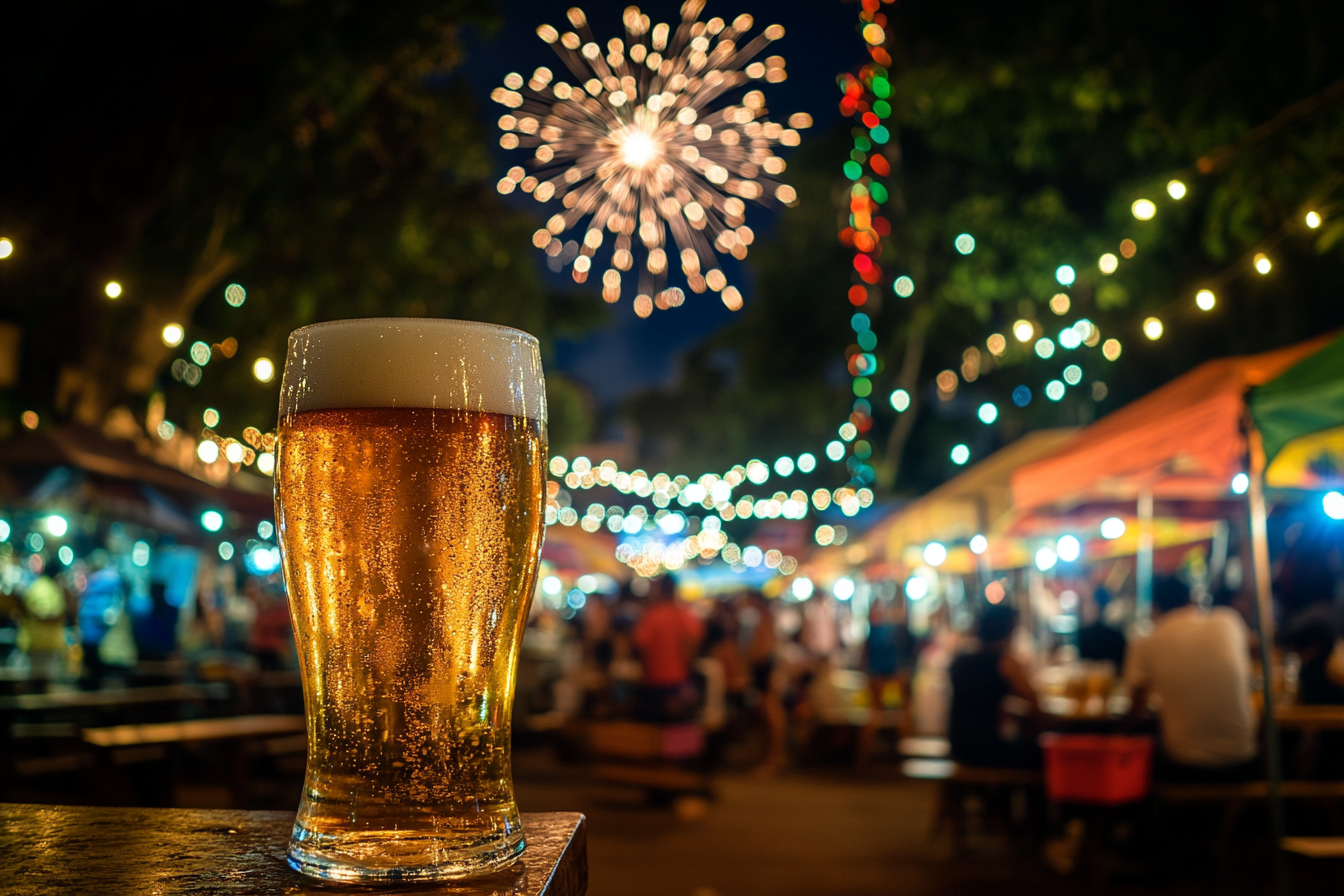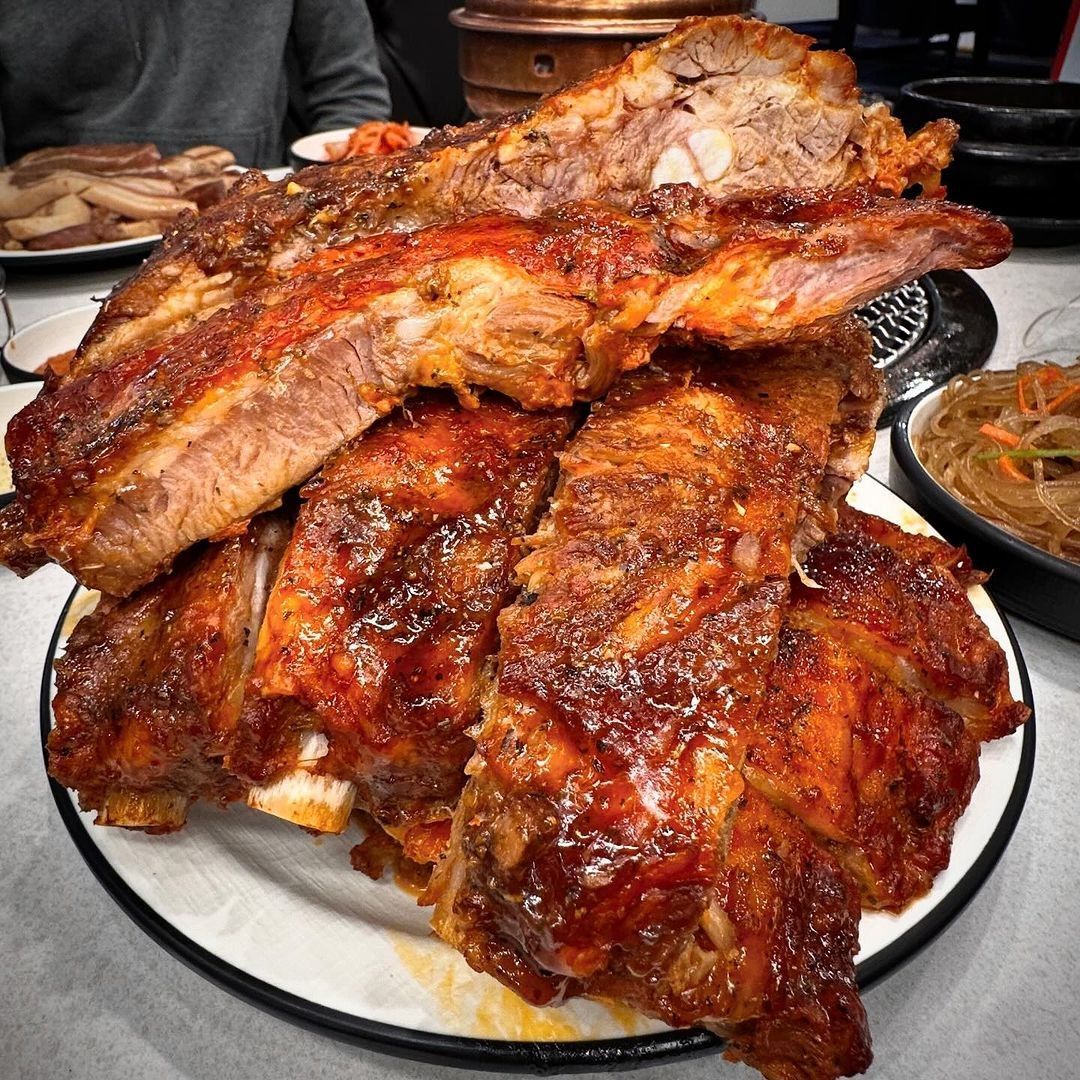Comprehensive Guide to Korea's Population: Top 30 Cities and Major Districts Explained for Expats
South Korea has been attracting more and more expats looking to branch out into new opportunities and soak up the local culture. To get a handle on where to settle down, work, or what to check out, it's crucial to size up the population spread across Korea's cities and districts. This guide goes deep into the population breakdown of Korea's top 30 cities and major districts of Seoul, Busan, Incheon, Daegu, Daejeon, and Gwangju, providing insights tailored for expats.
Population of Korea: A Detailed Overview
As of 2024, South Korea's population clocks in at 51,741,963, showing a slight dip of 0.08% from the previous year. This trend points to ongoing demographic hurdles, including an aging population and low birth rates. Despite these challenges, South Korea still stands out as one of the most densely packed countries globally, with 532 people squeezed into each square kilometer.
The country's population is largely concentrated in urban areas, with 42,039,227 people crammed into cities as of 2022. This high urbanization rate opens up a wide array of city living options for expats, from bustling metropolises to more laid-back urban centers.South Korea's net migration rate in 2024 comes in at 0.429 per 1000 population, hinting at a modest influx of international residents. This positive migration trend is beefing up the country's diverse expat communities, especially in major cities.
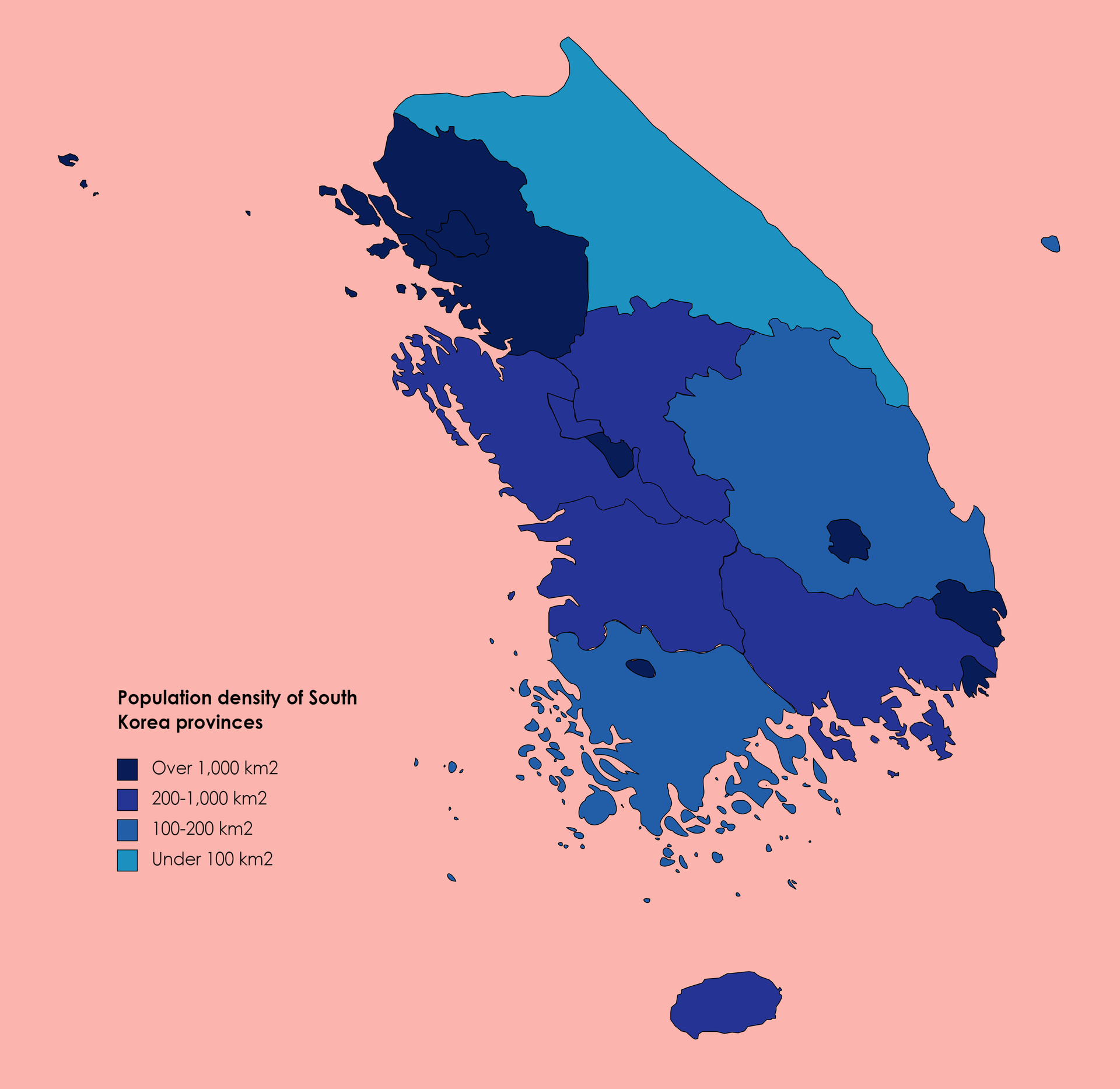
Population of Top 30 Cities in Korea
- Seoul: 10,349,312
- Busan: 3,678,555
- Incheon: 2,954,955
- Daegu: 2,566,540
- Gwangju: 1,490,092
- Daejeon: 1,469,543
- Suwon: 1,241,311
- Goyang: 1,073,069
- Seongnam: 1,031,935
- Changwon: 1,025,702
- Ulsan: 962,865
- Bucheon: 850,731
- Cheongju: 846,291
- Ansan: 716,785
- Cheonan: 666,417
- Jeonju: 652,392
- Hwaseong: 640,890
- Anyang: 595,644
- Gimhae: 550,758
- Pohang: 500,000
- Jeju City: 486,306
- Uijeongbu: 479,141
- Masan: 434,371
- Gumi: 427,770
- Pyeongtaek: 364,694
- Gwangmyeong: 357,545
- Sejong: 351,007
- Yangsan: 342,371
- Wonju: 332,849
- Jinju: 307,242
Seoul
As the capital and largest city, Seoul is teeming with a diverse expat community. The city is host to numerous international schools, cultural attractions, and a hopping nightlife. Popular expat areas like Itaewon in Yongsan-gu stand out for their international vibe, while Gangnam is known for its upscale lifestyle and entertainment options that draw people in.
Busan
Korea's second-largest city, Busan, is reeling in expats with its coastal charm and more chilled-out pace compared to Seoul. The city shows off beautiful beaches, a thriving port, and a growing expat scene, particularly in areas like Haeundae and Gwangalli that are pulling in more international residents.
Incheon
ncheon serves as a gateway to Korea, playing host to the country's main international airport. The city's Songdo district, part of the Incheon Free Economic Zone, is particularly catching on with expats due to its modern infrastructure and international schools.
Daegu
While not packing in as many expats as Seoul or Busan, Daegu offers a lower cost of living and rich cultural heritage to soak up. The city is known for its textiles industry and houses several universities, drawing in international students and educators.
Gwangju and Daejeon
These cities are shaping up as attractive options for expats, particularly those looking to break into education and technology sectors. Gwangju is known for its artistic scene, while Daejeon is carving out a niche as a hub for research and development.
Population of Seoul: A District-by-District Breakdown
Seoul is carved up into 25 districts (gu), each with its own unique character and draw for expats:
- Gangnam-gu (Population: 545,000): Known for luxury shopping, entertainment, and international schools. Popular among affluent expats.
- Seocho-gu (Population: 445,000): Upscale area with many foreign embassies and expat-friendly neighborhoods.
- Songpa-gu (Population: 670,000): Home to Lotte World and Olympic Park. Offers modern amenities and good transportation.
- Yongsan-gu (Population: 230,000): Houses the Itaewon area, a hub for expats with diverse restaurants and shops.
- Mapo-gu (Population: 375,000): Popular among young expats for its trendy Hongdae area and vibrant nightlife.
- Jung-gu (Population: 125,000): Central district with historical sites and shopping areas. Convenient for business expats.
- Jongno-gu (Population: 155,000): Historical heart of Seoul with palaces and traditional markets. Attracts culture-loving expats.
- Seodaemun-gu (Population: 310,000): Home to several universities. Popular among international students and academics.
- Eunpyeong-gu (Population: 480,000): Quieter district with access to nature. Appealing to expats seeking a more relaxed lifestyle.
- Nowon-gu (Population: 530,000): Residential area with many universities. Attracts expat educators and researchers.
- Dobong-gu (Population: 320,000): Offers access to mountains and outdoor activities. Suitable for nature-loving expats.
- Gangbuk-gu (Population: 310,000): Less expensive area with a more local feel. Attracts budget-conscious expats.
- Seongbuk-gu (Population: 440,000): Home to several universities and foreign embassies. Popular among diplomatic expats.
- Dongdaemun-gu (Population: 350,000): Known for shopping and fashion. Attracts expats in the fashion and retail industries.
- Jungnang-gu (Population: 400,000): Residential area with good transportation links. Offers a more local experience for expats.
- Gwangjin-gu (Population: 355,000): Home to several universities. Popular among international students and young professionals.
- Seongdong-gu (Population: 310,000): Developing area with a mix of residential and industrial zones. Attracting more expats as it gentrifies.
- Gangdong-gu (Population: 420,000): Residential area with good schools. Appealing to expat families.
- Gwanak-gu (Population: 500,000): Home to Seoul National University. Popular among international academics and researchers.
- Dongjak-gu (Population: 395,000): Residential area with good river access. Offers a balance of urban and natural environments.
- Yeongdeungpo-gu (Population: 370,000): Business district with a growing expat community, especially from China.
- Guro-gu (Population: 410,000): Known for its digital complex. Attracts expats in the tech industry.
- Geumcheon-gu (Population: 230,000): Industrial area transforming into a digital hub. Growing interest from tech-savvy expats.
- Yangcheon-gu (Population: 460,000): Residential area with good schools and parks. Popular among expat families.
- Gangseo-gu (Population: 590,000): Developing area with Gimpo Airport. Attracting more expats as it grows.
Population of Busan: Exploring Its Districts
Busan's districts serve up a mix of urban and coastal living:
- Haeundae-gu (Population: 377,200)
Popular among expats for its famous beach, modern amenities, and international atmosphere. Home to many foreign restaurants, bars, and international schools. Offers luxury apartments with ocean views. - Busanjin-gu
(Population: 360,000)
Central district with good transportation links. Popular for its shopping areas and proximity to Busan Station. More affordable than Haeundae, but still offers urban conveniences. - Saha-gu (Population: 320,000)
Known for its industrial areas and port facilities. Less popular among expats but offers more affordable housing options. - Buk-gu (Population: 290,000)
Residential area with access to nature, including Geumjeong Mountain. Quieter lifestyle, popular among expats seeking a more local experience. - Nam-gu
(Population: 270,000)
Home to UN Memorial Cemetery and Kyungsung University. Offers a mix of residential areas and cultural attractions. - Dong-gu (Population: 85,000)
Historical center with access to Busan Port. Popular for its markets and traditional atmosphere. Less common for expat residences but interesting for cultural experiences. - Yeonje-gu (Population: 200,000)
Residential area with good schools and parks. Becoming more popular among expat families. - Suyeong-gu (Population: 175,000)
Known for Gwangalli Beach and its view of Gwangan Bridge. Popular among younger expats for its nightlife and beach activities. - Geumjeong-gu (Population: 240,000)
Home to Pusan National University. Popular among international students and academics. - Sasang-gu (Population: 220,000)
Industrial area with more affordable housing. Less popular among expats but offers good transportation links. - Yeongdo-gu (Population: 120,000)
Island district connected by bridges. Offers scenic views and a more relaxed lifestyle. Growing in popularity among expats seeking a unique living experience. - Jung-gu (Population: 43,000)
Central business district with historical sites. Popular for shopping and dining but less so for expat residences. - Gangseo-gu (Population: 120,000)
Rapidly developing area with Gimhae International Airport. Growing in popularity due to new residential developments. - Dongnae-gu (Population: 260,000)
Known for its hot springs and historical sites. Popular among expats seeking a balance between urban conveniences and traditional Korean culture. - Gijang-gun (Population: 160,000)
Rural county offering a quieter lifestyle. Popular among expats seeking nature and a break from city life.
Population of Incheon: A District Analysis
Incheon's districts include:
- Bupyeong-gu (Population: 480,000)
Known for its large underground shopping center and good transportation links. Popular among expats for its affordability and urban conveniences. - Dong-gu
(Population: 70,000)
One of the smallest districts, home to Incheon Port. Less popular among expats but offers a glimpse into Incheon's maritime history. - Gyeyang-gu (Population: 330,000)
Residential area with good access to nature, including Gyeyang Mountain. Attracts expats seeking a quieter lifestyle. - Jung-gu
(Population: 115,000)
Historical center with Chinatown and open port area. Popular among expats for its cultural attractions and international atmosphere. - Michuhol-gu (Population: 410,000)
Central district with universities and shopping areas. Attracts international students and young professionals. - Namdong-gu (Population: 530,000)
Known for its industrial complexes and Songdo Central Park. Growing in popularity among expats working in tech and manufacturing. - Seo-gu (Population: 581,000)
Largest district by population, home to parts of Songdo International Business District. Popular among expats for its modern infrastructure and international schools. - Yeonsu-gu (Population: 380,000)
Houses most of Songdo International Business District. Highly popular among expats for its futuristic cityscape, international community, and amenities. - Ganghwa-gun (Population: 65,000)
Rural area known for its natural beauty and historical sites. Attracts expats interested in Korean history and outdoor activities. - Ongjin-gun (Population: 20,000)
Consists of multiple islands. Less popular for long-term expat living but attractive for its beaches and getaway potential.
Population of Daegu: Insights Into Its Districts
Key districts in Daegu include:
- Jung-gu (중구) - Population: 80,199
Central district with historical sites and shopping areas. Popular for its urban amenities but less common for expat residences. - Dong-gu (동구) - Population: 339,530
Eastern district with access to Palgongsan Mountain. Offers a mix of nature and urban living. - Seo-gu
(서구) - Population: 159,827
Western district. Less popular among expats but offers more affordable housing options. - Nam-gu
(남구) - Population: 141,519
Southern district with universities and cultural attractions. Attracts some international students and academics. - Buk-gu
(북구) - Population: 430,912
Northern district with good access to nature. Popular among expats seeking a quieter lifestyle while still being in the city. - Suseong-gu (수성구) - Population: 411,553
Known for its affluent neighborhoods and good schools. Popular among expat families and those seeking a higher standard of living. - Dalseo-gu (달서구) - Population: 536,989
Largest district by population. Growing in popularity among expats due to new developments and amenities. - Dalseong-gun (달성군) - Population: 263,162
More rural area on the outskirts of Daegu. Less popular among expats but offers a different lifestyle for those seeking to escape the city.
Population of Daejeon: An Expat's Guide to Its Districts
Daejeon's districts include:
- Seo-gu (서구) - Population: 474,444
The largest and most populous district in Daejeon. It's the administrative center, housing many government offices and is considered the new downtown area. Popular among expats for its modern amenities and urban lifestyle. - Yuseong-gu (유성구) - Population: 350,337
Known for its hot springs and as the science and technology hub of Daejeon. Home to KAIST (Korea Advanced Institute of Science and Technology) and many research institutes. Attracts many international students and researchers. - Dong-gu (동구) - Population: 232,559
The eastern district with access to nature, including Palgongsan Mountain. Offers a mix of urban living and outdoor activities. Less popular among expats but provides a more local experience. - Jung-gu (중구) - Population: 232,077
The central district and historical heart of Daejeon. Known for its shopping areas, traditional markets, and nightlife. Popular among younger expats for its vibrant atmosphere. - Daedeok-gu
(대덕구) - Population: 174,791
Home to the Daedeok Science Town, attracting many scientists and researchers. Less populated but offers a quieter lifestyle with access to research facilities.
Population of Gwangju: Exploring Its Districts for Expats
Gwangju's districts include:
- Buk-gu (북구) - Population: 439,352
The largest district by population. Popular among expats for its mix of urban amenities and access to nature, including hiking trails. Home to several universities, attracting international students and educators. - Gwangsan-gu
(광산구) - Population: 422,502
The second most populous district. Known for its industrial areas and newer developments. Less popular among expats but offers more affordable housing options. - Seo-gu
(서구) - Population: 294,854
Central district with good transportation links. Popular for shopping and dining. Attracts expats looking for an urban lifestyle. - Nam-gu
(남구) - Population: 214,860
Southern district with a mix of residential areas and cultural attractions. Home to the May 18th National Cemetery, significant for Gwangju's history. - Dong-gu (동구) - Population: 106,005
The smallest district by population. Historical center with traditional markets and cultural sites. Less common for expat residences but interesting for cultural experiences.
To wrap things up, getting a feel for the population spread across Korea's cities and districts is key for expats looking to set up shop in the country. Each area offers its own unique perks, from the hustle and bustle of Seoul to the coastal charm of Busan and the tech hubs of Daejeon and Gwangju. By weighing up both population data and lifestyle factors, expats can zero in on the perfect place to call home in Korea's diverse urban landscape.
FAQ Section
What is the population of Seoul?
Seoul's population clocks in at 10,349,312. As Korea's capital and largest city, it's brimming with opportunities for expats in various industries.
How many people live in Busan?
Busan is home to 3,678,555 people. It's Korea's second-largest city and serves up a coastal lifestyle that's reeling in many expats.
What are the largest cities in Korea by population?
The cities topping the charts in Korea by population are Seoul, Busan, Incheon, Daegu, and Gwangju.
Which Seoul district has the highest population?
While specific district populations aren't dished out, Songpa-gu and Gangnam-gu are among the most packed. These areas serve up numerous amenities but can be pricier for expats to settle in.
Is Incheon a good place for expats to set up shop?
Incheon, with a population of 2,954,955, is increasingly catching on with expats, especially in the Songdo area. Its proximity to Seoul and the international airport makes it an attractive option to put down roots.
Where do most expats settle in Korea?
Most expats in Korea are settle in Seoul, particularly in areas like Itaewon, Gangnam, and Hongdae. Busan and Incheon are also drawing in significant expat communities.
What is the population of Daegu?
Daegu is home to 2,566,540 people. It offers a lower cost of living to those looking to stretch their won compared to Seoul and is known for its textiles industry and universities.
Which district in Busan is best for expats to check out?
Haeundae-gu in Busan is particularly catching on with expats due to its beach, international community, and modern amenities.
How far is Gwangju from Seoul?
Gwangju, with a population of 1,490,092, is about 270 km southwest of Seoul. You can zip there by high-speed train in about 2.5 hours.



